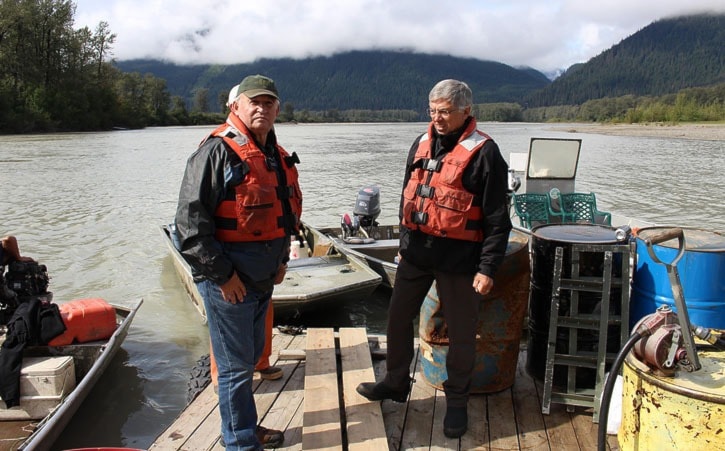Energy and Mines Minister Bill Bennett returned to B.C. Thursday after efforts to calm fears of environmental impact from new mines in the watershed the province shares with Alaska.
The trip was organized by Alaska Lieutenant-Governor Byron Mallott. It included a trip up the Taku River to the idle Tulsequah Chief mine, built by Cominco in the 1950s and long an abandoned source of acid and heavy metal pollution running from its entrance tunnel into the Tulsequah River.
The last company that tried to remediate and restart Tulsequah Chief, Redfern Resources, went bankrupt in the economic collapse of 2008-9. Chieftain Metals took over and built a water treatment plant, and the province declared its project "substantially started" this spring.
"We need to do some work around that mine site," Bennett said after a riverboat and helicopter tour with Mallot. "It does require some water treatment, and there is a water treatment plant built there. That's one area where B.C. could improve its performance."
Some of the commercial fishermen, environmentalists and aboriginal tribes Bennett met in a four-day visit were surprised to find that B.C. has only one operating mine in the trans-boundary watershed region, he said. That is Red Chris, near the Iskut River south of Dease Lake, with others in the area part-way through their permit process.
The Brucejack and KSM mine properties are proposed for the Unuk River watershed. KSM has its environmental certificate after designing twin 23-km tunnels to carry ore for milling out of the watershed, but some people in Alaska weren't aware of that modification, Bennett said.
Alaska and B.C. have similar mine approval processes today and Bennett hopes to have a protocol for regulating and restoring mine sites that Premier Christy Clark and Alaska Governor Bill Walker can sign later this year.
Acid runoff pond on bank of Tulsequah River mine site in northwest B.C., 2011. Yukon News photo
